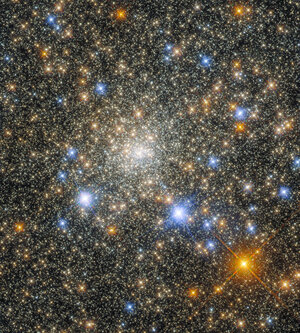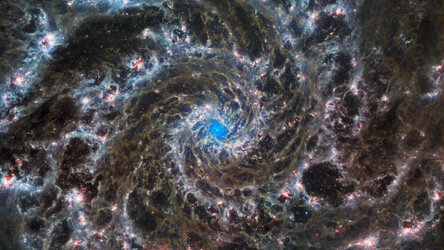Accept all cookies Accept only essential cookies See our Cookie Notice

About ESA
The European Space Agency (ESA) is Europe’s gateway to space. Its mission is to shape the development of Europe’s space capability and ensure that investment in space continues to deliver benefits to the citizens of Europe and the world.
Highlights
ESA - United space in Europe
This is ESA ESA facts Member States & Cooperating States Funding Director General Top management For Member State Delegations European vision European Space Policy ESA & EU Space Councils Responsibility & Sustainability Annual Report Calendar of meetings Corporate newsEstablishments & sites
ESA Headquarters ESA ESTEC ESA ESOC ESA ESRIN ESA EAC ESA ESAC Europe's Spaceport ESA ESEC ESA ECSAT Brussels Office Washington OfficeWorking with ESA
Business with ESA ESA Commercialisation Gateway Law at ESA Careers Cyber resilience at ESA IT at ESA Newsroom Partnerships Merchandising Licence Education Open Space Innovation Platform Integrity and Reporting Administrative Tribunal Health and SafetyMore about ESA
History ESA Historical Archives Exhibitions Publications Art & Culture ESA Merchandise Kids Diversity ESA Brand Centre ESA ChampionsSpace in Member States
Find out more about space activities in our 23 Member States, and understand how ESA works together with their national agencies, institutions and organisations.
Science & Exploration
Exploring our Solar System and unlocking the secrets of the Universe
Go to topicAstronauts
Missions
Juice Euclid Webb Solar Orbiter BepiColombo Gaia ExoMars Cheops Exoplanet missions More missionsActivities
International Space Station Orion service module Gateway Concordia Caves & Pangaea BenefitsLatest
Space Safety
Protecting life and infrastructure on Earth and in orbit
Go to topicAsteroids
Asteroids and Planetary Defence Asteroid danger explained Flyeye telescope: asteroid detection Hera mission: asteroid deflection Near-Earth Object Coordination CentreSpace junk
About space debris Space debris by the numbers Space Environment Report In space refuelling, refurbishing and removingSafety from space
Clean Space ecodesign Zero Debris Technologies Space for Earth Supporting Sustainable DevelopmentApplications
Using space to benefit citizens and meet future challenges on Earth
Go to topicObserving the Earth
Observing the Earth Future EO Copernicus Meteorology Space for our climate Satellite missionsCommercialisation
ESA Commercialisation Gateway Open Space Innovation Platform Business Incubation ESA Space SolutionsLatest
Enabling & Support
Making space accessible and developing the technologies for the future
Go to topicBuilding missions
Space Engineering and Technology Test centre Laboratories Concurrent Design Facility Preparing for the future Shaping the Future Discovery and Preparation Advanced Concepts TeamSpace transportation
Space Transportation Ariane Vega Space Rider Future space transportation Boost! Europe's Spaceport Launches from Europe's Spaceport from 2012Latest

A clear view of a galaxy cluster
Thank you for liking
You have already liked this page, you can only like it once!
The truly massive galaxy cluster 2MASX J05101744-4519179 basks in the centre of this image from the NASA/ESA Hubble Space Telescope. This distant galaxy cluster is a cosmic leviathan that is highly luminous at X-ray wavelengths. Observing galaxy clusters like 2MASX J05101744-4519179 can advance our understanding of the evolution and interactions of dark and luminous matter in galaxy clusters, and also reveals powerful gravitational ‘telescopes’ that magnify distant objects through gravitational lensing. Knowing the location of these lenses can enable future observations with both Hubble and the NASA/ESA/CSA James Webb Space Telescope. The cluster 2MASX J05101744-4519179 is located in the constellation Pictor, around 2.6 billion light-years from Earth.
Two of Hubble’s instruments joined forces to create this image: Wide Field Camera 3 and the Advanced Camera for Surveys. Both are third-generation instruments that offer superb image quality and high sensitivity to astronomers studying a range of scientific questions. Both instruments provide images of wide areas of the night sky, but view slightly different parts of the electromagnetic spectrum. WFC3 spans the spectrum from the ultraviolet through to visible light and the near-infrared. In contrast to the wide panchromatic coverage of WFC3, ACS was optimised for visible-light observations.
Getting the best from Hubble requires instruments to use built-in corrective optics to account for the effects of the primary mirror's aberration. During the construction of Hubble, a faulty instrument caused the primary mirror to be very precisely ground to slightly the wrong shape by only 0.0002 mm. A corrective instrument called COSTAR was developed to account for this tiny discrepancy, and later instruments like WFC3 and ACS were built with their own corrective optics.
[Image Description: A cluster of elliptical galaxies, visible as a crowd of oval shapes, each glowing around a bright core. The elliptical galaxy that appears largest by far is in the centre, with the other largest galaxies close to it. They are surrounded by a variety of more distant stars and galaxies, in many shapes and sizes but all much smaller, on a dark background.]
-
CREDIT
ESA/Hubble & NASA, H. Ebeling; CC BY 4.0 -
LICENCE
CC BY 4.0 INT or ESA Standard Licence
(content can be used under either licence)

Channelling light from starbursts

Portrait of a globular cluster

Galaxy cluster with bursting heart

The cluster that almost got away















 Germany
Germany
 Austria
Austria
 Belgium
Belgium
 Denmark
Denmark
 Spain
Spain
 Estonia
Estonia
 Finland
Finland
 France
France
 Greece
Greece
 Hungary
Hungary
 Ireland
Ireland
 Italy
Italy
 Luxembourg
Luxembourg
 Norway
Norway
 The Netherlands
The Netherlands
 Poland
Poland
 Portugal
Portugal
 Czechia
Czechia
 Romania
Romania
 United Kingdom
United Kingdom
 Slovenia
Slovenia
 Sweden
Sweden
 Switzerland
Switzerland
























